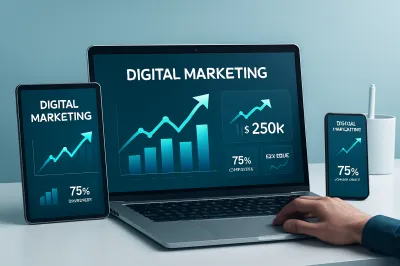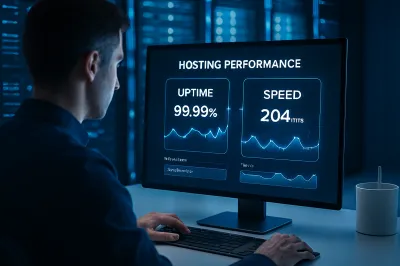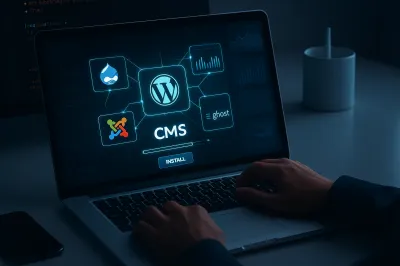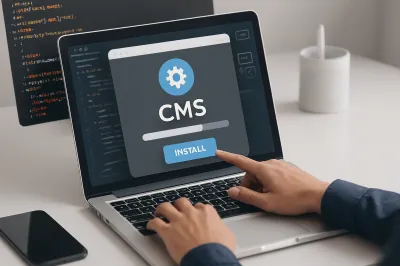You can write the most amazing, in-depth blog post in the world, but if your title is weak, no one will ever read it. Your title is the single most important part of your content. It's the first impression that makes a potential reader decide whether to click your link or scroll right past it. Mastering the art of writing compelling headlines is a superpower. Here are 10 actionable tips to help you write blog post titles that demand to be clicked.
Table of Contents
1. Use Numbers and Lists
There's a reason why listicles ("Top 10...", "7 Ways to...") are so popular: they work. Numbers in a headline provide predictability and structure. They promise the reader a scannable, easy-to-digest piece of content. The brain is naturally drawn to numbers and lists as a way of organizing information.
Example: "Tips for Better SEO" vs. "7 Actionable Tips for Better SEO"
2. Include Your Target Keyword
This is non-negotiable for SEO. Your primary keyword should be in your title, ideally as close to the beginning as possible. This tells both users and search engines exactly what your article is about right away. All the creativity in the world won't help if Google doesn't know what your content is about.
3. Spark Curiosity with a Question
Question-based titles are effective because they create an "information gap" in the reader's mind. They tap into the natural human desire to find an answer. A good question headline directly mirrors what the user is already asking in their head.
Example: "The Difference Between WordPress.com and WordPress.org" vs. "What's the Real Difference Between WordPress.com and WordPress.org?"
4. Highlight a Clear Benefit
Your title should answer the reader's silent question: "What's in it for me?" (WIIFM). Frame your title around the result or benefit the reader will get from your content. Use benefit-driven words like "How to," "Guide," "Tips," "Increase," "Fix," and "Improve."
Example: "An Article About Blog Post Titles" vs. "How to Write Blog Post Titles That Get More Clicks"
5. Use Emotional "Power Words"
Power words are terms that trigger an emotional or psychological response. Sprinkling them into your titles can dramatically increase your click-through rate. Examples include: Ultimate, Complete, Simple, Essential, Effortless, Surprising, Secret, Guide, Best.
Example: "Guide to SEO" vs. "The Ultimate Guide to SEO for Beginners"
6. Keep it at the Optimal Length
Google typically displays the first 50–60 characters of a title tag in its search results. If your title is too long, it will get cut off with an ellipsis ("..."). While it's not a strict rule, keeping your title concise ensures that the most important information is visible to the searcher.
7. Create a Sense of Urgency or Exclusivity
Adding a sense of timeliness can encourage immediate clicks. You can do this by adding the current year or words like "Now" or "Today." You can also make it feel exclusive by specifying the audience.
Examples: "The Complete SEO Checklist (Updated for 2025)", "A Beginner's Guide to..."
8. Write a "How-To" Guide
"How-To" headlines are consistently among the most popular and effective types of titles. They promise a direct solution to a problem, offering clear, step-by-step instructions that readers find incredibly valuable.
Example: "How to Install Google Analytics 4 on Your Website"
9. Be Ultra-Specific
Specificity builds credibility and attracts the right audience. A vague title is easily ignored, but a specific one promises targeted, useful information.
Vague: "Tips for SEO"
Specific: "5 On-Page SEO Tips to Boost Your Rankings This Week"
10. Analyze What's Already Working
Before finalizing your title, search for your target keyword on Google. Look at the titles of the top 5-10 ranking articles. What patterns do you see? Are they listicles? How-to guides? Questions? This doesn't mean you should copy them, but it gives you powerful clues about what users are clicking on and what Google prefers to rank for that query.
Conclusion
A great title is a blend of science (SEO keywords) and art (human psychology). It promises value, sparks curiosity, and is clear about the content within. Don't treat your title as an afterthought. Often, you should spend just as much time crafting the perfect title as you do writing the article itself. It's the best investment you can make in your content's success.





